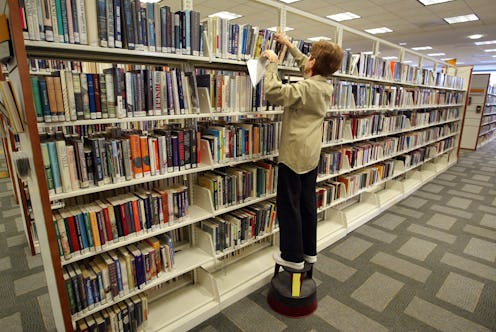Life
So Porn Studies Is a Thing
Can there be such a thing as the scientific study of porn? According to two British academics, the answer is yes. And it deserves its own journal. In spring 2014, the world’s first peer-reviewed academic journal to study the subject will launch. The announcement for Porn Studies was met with wide criticism; some commenters simply deem it a silly project, while others claim it’s actually harmful to give such serious consideration to porn.
Porn Studies is the brainchild of Clarissa Smith, a reader in sexuality and culture at Sunderland, and Feona Attwood, a professor of cultural studies at Middlesex University. These editors’ mission is to bring together the work being done on pornography in different fields. "We became aware that more and more academics were writing about this sort of thing. But there was no one place where it was being gathered together," said Attwood in the Guardian .
Porn Studies ’ call for papers describes the journal as “an interdisciplinary journal informed by critical sexuality studies and work exploring the intersection of sexuality, gender, race, class, age and ability. It focuses on developing knowledge of pornographies past and present, in all their variations and around the world.”
Attwood sees a lack of academic knowledge on the subject. The research is limited, she says, and "tends to do the same thing over and over again. It just asks the same questions. Is porn harmful? Is it linked to other things? Then it doesn't define what porn is and, if it finds the link, it doesn't really explain anything. There's a lot written and very little known."
A petition organized by the group Stop Porn Culture, accusing the editorial board of being “uniformly pro-porn” and of “further [fostering] the normalization of porn,” has reached 880 signatories. Efforts to control or ban porn are brewing in many countries, including England and Iceland. But pornographic material has been around in different forms for centuries. 70 percent of men and 30 percent of women watch porn—blame a human curiosity and sexual desire that can’t be curbed. That said, we're still left wondering what our bottom line should be when it comes to controlling the industry. This is where Porn Studies can come in.
Smith defended her "pro-porn" position in the editors' interview with the Guardian. "Porn is important to people on all kinds of levels, but, if you want people to be honest or to tell you things about their engagements with pornography, you have to be prepared to listen," she said. "I am politically motivated about the fact that people who look at porn are not all lizard people." Smith is no liar—every month, porn websites receive more visits than Amazon, Twitter, and Netflix combined, and use up to 30 percent of Internet bandwidth.
That said, Smith and Attwood have mentioned a lack of evidence showing porn has gotten more violent, when this is untrue. Lots of research actually shows a correlation. The children’s commissioner of England published a report on 40,000 studies on the effects of porn. This report determined a correlation between those who had watched violent porn and those who had committed violent crimes. Fiona Elvines of Rape Crisis South London backed these research results with first-hand experience:
"We are having lots of women talking about being raped and being filmed and that being used as a method for silencing them, but that will take a while to make it into the research papers.They're told that, if they go to the police, the footage will be posted online. We see porn being used by child abusers to groom them. My concern is the kind of knowledge we have isn't seen as valid because the editors have a pro-porn slant and it will silence dissenting voices."
Rape Crisis South London did some research of its own to show just how violent the porn out there is. When typing in “free porn” into Google, this is what they found: 85 percent of sites had videos depicting the rape of under-18s, 75 percent involved guns or knives, 43 percent showed a drugged woman, and 46 percent depicted incest rape.
It can be hard to sift through the pressures of moral panic and the many currents of academic research. A desire to stop people from watching violent porn is only a natural reaction to the horrendous effects rape and porn culture can have. But what's the best way to solve things is a contentious question. For instance, is it better to have porn depicting rape (which is a fantasy for a number of women) that was produced in a safe environment, where all the actors were consensual and healthy? Or is it better to show loving missionary sex performed by drugged and trafficked actors? Porn Studies is the best solution I’ve heard of in a while to help answer such thorny questions, both factual and ethical. Knowledge is power.
